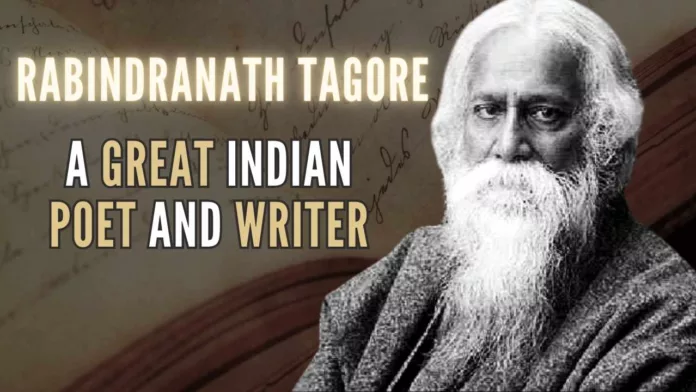
Introduction
Rabindranath Tagore, a multifaceted genius and one of the most celebrated figures in world literature, was a prolific writer, poet, composer, artist, and philosopher. His impact on literature and art has been profound, and his contributions to society have earned him a place of honour in history. Besides his literary masterpieces, Tagore’s artistic vision extended to the realm of music, and he composed the national anthems for three countries – India, Bangladesh, and Sri Lanka. This article delves into the life and works of Rabindranath Tagore, exploring his literary genius, his role in shaping three national anthems, and his enduring legacy.
Early life and literary journey
Rabindranath Tagore was born on May 7, 1861, in Calcutta (now Kolkata), India. He hailed from a prominent Bengali family, and his father, Debendranath Tagore, was a leading religious and social reformer. Tagore’s early education was eclectic and unconventional, influenced by his family’s liberal ideologies. He was home-schooled and exposed to literature, music, and art from an early age.
At the tender age of eight, Tagore wrote his first poem, and by the time he was a teenager, he was already a published poet. His early works were profoundly influenced by Vaishnava poetry and the Baul tradition, which emphasized the mystical and spiritual aspects of life. Over time, Tagore’s style evolved, and he began exploring diverse themes, from nature and love to human struggles and societal issues.
The literary marvels of Rabindranath Tagore
Gitanjali: The Song Offerings One of Tagore’s most significant literary achievements was “Gitanjali,” an anthology of poems that earned him international recognition. Published in 1910, the collection brought Tagore the Nobel Prize in Literature in 1913, making him the first Asian to receive the prestigious award. “Gitanjali” highlighted his lyrical brilliance and deeply spiritual outlook, resonating with readers across the globe.
The Bengali novels: Tagore’s literary prowess extended beyond poetry. He was a prolific novelist and authored many novels in Bengali, including “Gora,” “Ghare-Baire,” and “Chokher Bali.” His novels often explored complex human relationships, societal norms, and the tension between tradition and modernity.
Short stories and essays: Tagore’s short stories were equally remarkable, with works like “Kabuliwala,” “The Postmaster,” and “The Hungry Stones” capturing the essence of human emotions and experiences. He was also an insightful essayist, addressing various social, political, and philosophical issues of his time.
The three national anthems
Tagore’s artistic talents were not limited to writing; he was also an accomplished composer and musician. His music compositions have had a profound impact, with three countries adopting his works as their national anthems:
- India: Jana Gana Mana. In 1911, Rabindranath Tagore composed “Jana Gana Mana” as a tribute to Emperor George V and later set it to music. Initially, the song was meant to encourage unity among the diverse Indian population and express loyalty to the British Crown. However, it took on a different significance as India’s struggle for independence intensified. In 1950, when India became a republic, “Jana Gana Mana” was officially adopted as the national anthem.
- Bangladesh: Amar Shonar Bangla. Originally written as a poem in 1905 during the partition of Bengal, Tagore’s “Amar Shonar Bangla” (My Golden Bengal) exudes love and pride for the Bengali homeland. The poem was later set to music and became synonymous with the independence movement of Bangladesh. After the country’s liberation from Pakistan in 1971, it was adopted as the national anthem.
- Sri Lanka: Sri Lanka Matha. Sri Lanka adopted “Namo Namo Matha” as its national anthem upon gaining independence from British rule in 1948. The lyrics were penned by Ananda Samarakoon, but the music was composed by Rabindranath Tagore, and the anthem was originally titled “Namo Namo Matha.”
Tagore’s philosophical and social impact
Tagore’s literary and musical creations were deeply rooted in humanism and a love for nature. His philosophy emphasized the importance of individual freedom, the pursuit of truth, and the celebration of diversity. He spoke against social discrimination, promoted education, and supported cultural exchange as a means of fostering global understanding.
His belief in the universality of human values and the power of cultural exchange earned him admirers from all corners of the world. Notable personalities like Albert Einstein and Jawaharlal Nehru were among his friends and admirers, and they shared mutual respect and admiration for each other’s ideas.
Legacy and influence
Rabindranath Tagore’s impact on literature, music, and culture remains unparalleled. His work has been translated into numerous languages, making him one of the most widely read-poets in the world. Beyond his literary and musical creations, Tagore’s educational endeavours led to the establishment of Visva-Bharati University, which continues to be a hub of academic and cultural exchange.
Tagore’s influence on subsequent generations of writers, artists, and musicians is evident in their works. Many contemporary writers and poets draw inspiration from his humanistic values, eloquent prose, and evocative poetry.
Conclusion
Rabindranath Tagore’s life and works have left an indelible mark on world literature, music, and culture. His literary genius, combined with his musical prowess, gifted the world three national anthems, each representing the essence and aspirations of its respective nation. Tagore’s ideas of universal humanism, love for nature, and celebration of cultural diversity continue to resonate across borders and inspire generations to come. As we reflect on his profound contributions, we honour the legacy of this visionary artist and celebrate the enduring relevance of his creations.
Note:
1. Text in Blue points to additional data on the topic.
2. The views expressed here are those of the author and do not necessarily represent or reflect the views of PGurus.
PGurus is now on Telegram. Click here to join our channel and stay updated with all the latest news and views
For all the latest updates, download PGurus App.










